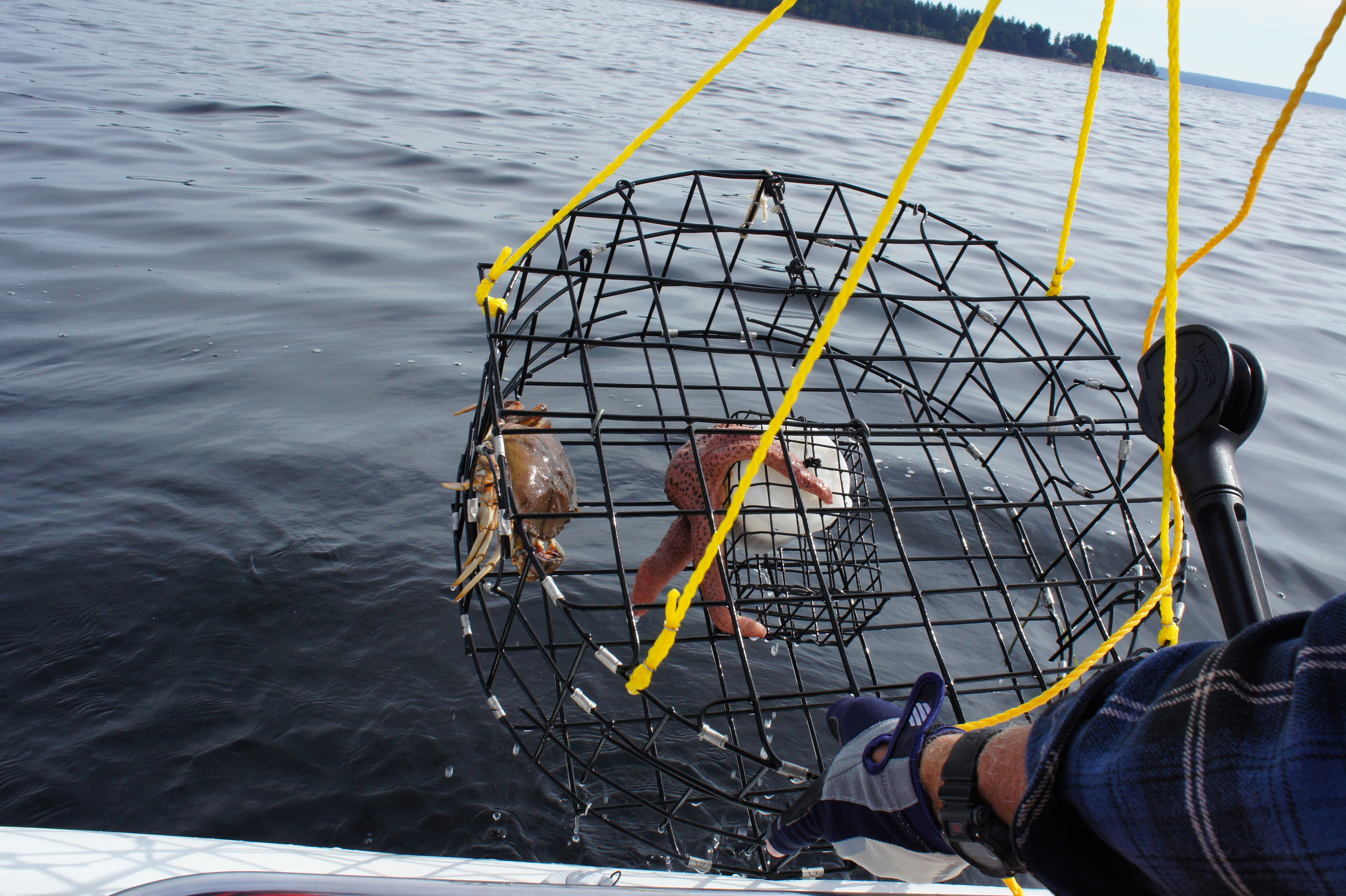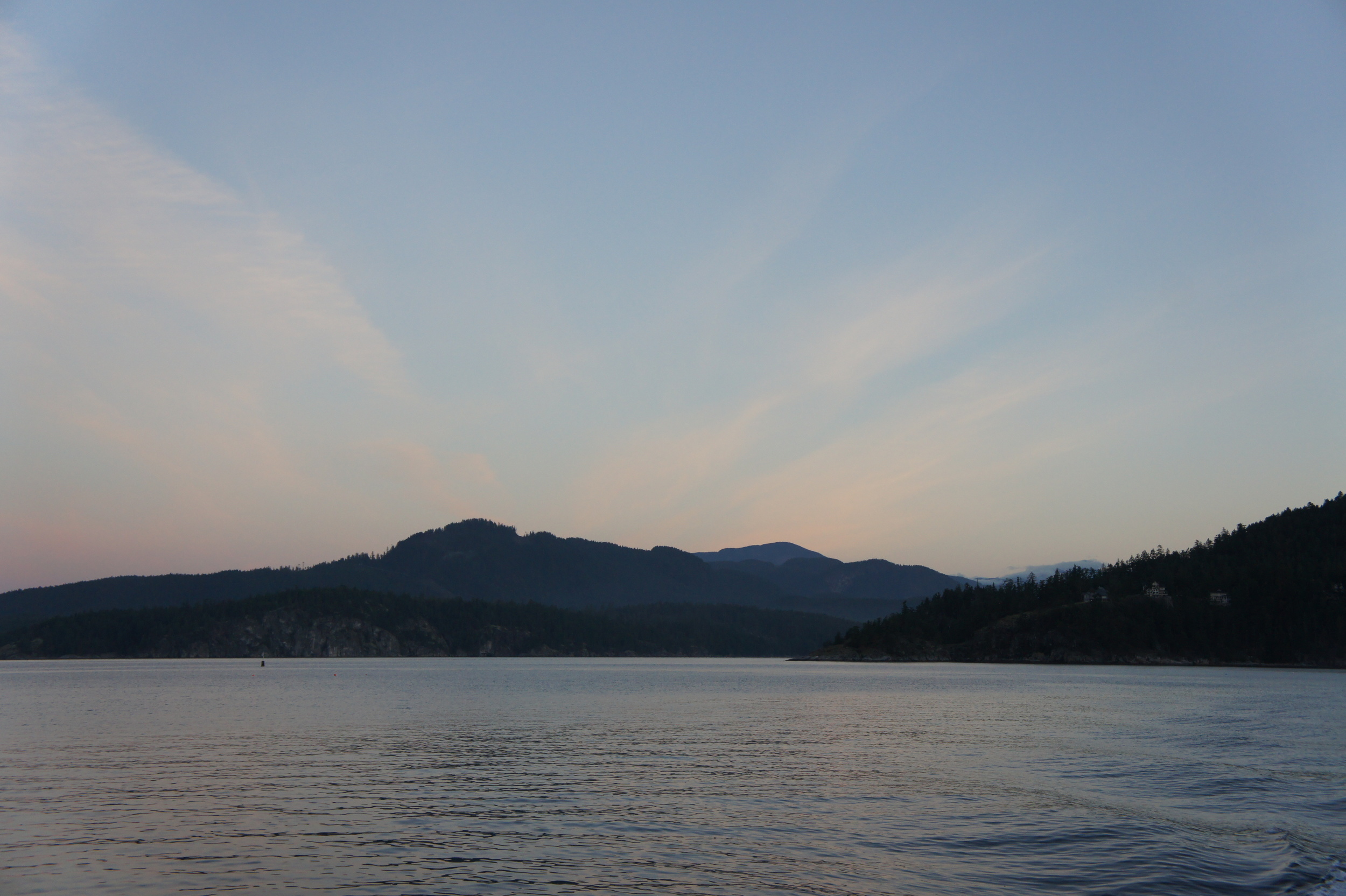The Inside Passage
A week on a boat, bobbing in the cold pacific waters of the Inside Passage off the coast of British Columbia, in late September, did not originally sound very appealing to me. I had visions of myself tying up a rope, heavy with sea water, dressed in all the fleece, gore-tex, and galoshes I own in a futile effort to stay warm. I acquiesced to this trip in large part because my wonderful father was the main organizer, we were going to be on his boat, and, well, I didn't have much of a choice.
Boy was I wrong to think this would just be a week of tortured but well fed (see: father's boat and father being French) boat cruising. For starters the weather was glorious the entire week, with multicoloured sunsets, no tourists, lots of Orcas and the lovely people of Canada (possibly the nicest people on earth).
I joined my father in a place called Campbell River after 12 hours of bad weather and canceled flights. Obviously that didn't bode well but after a sputtering start, the weather gods cooperating beautifully. Campbell River is located on Vancouver Island facing the Inside Passage. This is the body of water that lies between the coast of British Columbia (BC) and the Island of Vancouver, running up the coast from Seattle to Alaska. Nautically speaking its a pretty wonderful spot as doing any sort of sailing or boating in the Pacific is a feat of human endurance. The Pacific is marked by big currents, big waves, big storms, and lots of big animals (see: whales of all kinds). The Inside Passage was designed by nature in such a way as to provide boats a way to sail from Seattle almost the whole way to the southern tip of Alaska protected from all that "big" stuff. On top of that its strikingly beautiful, and because its Canada, a country with a population density of 3.75 people per km2, its empty and wild*. (Compare that to say, India, where the population density is 411.89 people/km2).
Lots of interesting people have sailed up this body of water (Vancouver, Juan de Fuca, Cook) but the one we will deal with here is Jean-Francois de Galaup, comte de Laperouse. Who, you may be asking yourself, is that? He was the man who discovered the world for France, our James Cook if you will. He had the unfortunate luck of sailing for Louis XVI (he who got his head chopped off by the Jacobins) and, a bit like Cook, died somewhere in the south Pacific (the island of Vanikoro to be specific - good luck finding that on a map). He spent a lot of time in the Inside Passage, mapping and making initial contacts for the French with the local nations. He is, all in all, a rather fascinating man and the namesake of the boat I found myself on. I highly suggest you click on his name above, its hyperlinked to his google page - hours of dorky reading. The name of our boat served both as a way to trip up any English speaker and give them a little lesson in French history - two of my father's favourite activities (oh okay, and mine too).
I should probably get to the trip portion of this post, since this is a travel blog after all. We headed east from Campbell River and into Desolation Sound. The name is a bit misleading as it makes it sound like some sort of terrible catastrophe took place here when really no such thing has. The name comes from Captain Vancouver, he of the British Navy and namesake to the island and biggest city in BC, because the bay is ringed by very tall mountains that fall straight into the water, leaving little room for any possible human habitation. The 18th century was a time of human expansion, and these scientist-sailors where not just making that century's version of National Geographic television specials, they were also looking for places humans could settle and expand the reach, in this case, of the British crown. Desolation Sound is so named because it is too desolate for any British subject to settle (get it?), those slopes are essentially too steep. He wasn't so off on that observation, still today its relatively unmarked, with many areas accessible only from the ocean.
This was also where we spotted a pod of Orcas bobbing about. I learned that there are three kinds of Orcas - locals, and two types of transient Orcas. Basically, one kind stays put year round and enjoys the local salmon. The other two types will go after seals, and well, you if you happen to be swimming around. One of them goes north to Alaska and the other swims out into the Pacific. Its cliche, but whales inspire, even in the most cynical, a sense of wonder that is rarely matched. That is certainly what happened on our boat.
After a night in a lovely spot called Cortes Bay, we headed further south slowly making our way back to Seattle over the remaining 5 days. The boat had been out for two months, and my leg was the last leg of the trip back to home base. Most days were spent gawping at the rather majestic landscape of the coast of BC -- all big trees covering big mountains disappearing into the horizon. Spotting more wildlife - another Orca, several golden eagles, and fishing for dinner (Ling Cod and Dungeness Crab) . We took the Kayaks out for a few short trips around different bays and inlets. On the whole we were one of very few boats plying our way through the waters south. A highlight was a stop over in Ganges on Salt Spring Island where I had a chance of engaging in my favourite travel activity which is to rent a scooter and putting my life in danger by zipping around a foreign country (okay, Canada isn't quite Thailand). This time though I roped my father and uncle in and put their lives in danger too. Though that was fun, the highlight was the little French patisserie run by a lovely lady from Arcachon who made perfect, delicious, flaky, i.e. proper croissants. She's located here (go!).
The conclusion? Beautiful weather is a must but even without that there is nothing desolating about Desolation Sound and the Inside Passage.
Northwest sunrise seen from a porthole
Sea stars, or non-earth life forms?
Couldn't be helped







